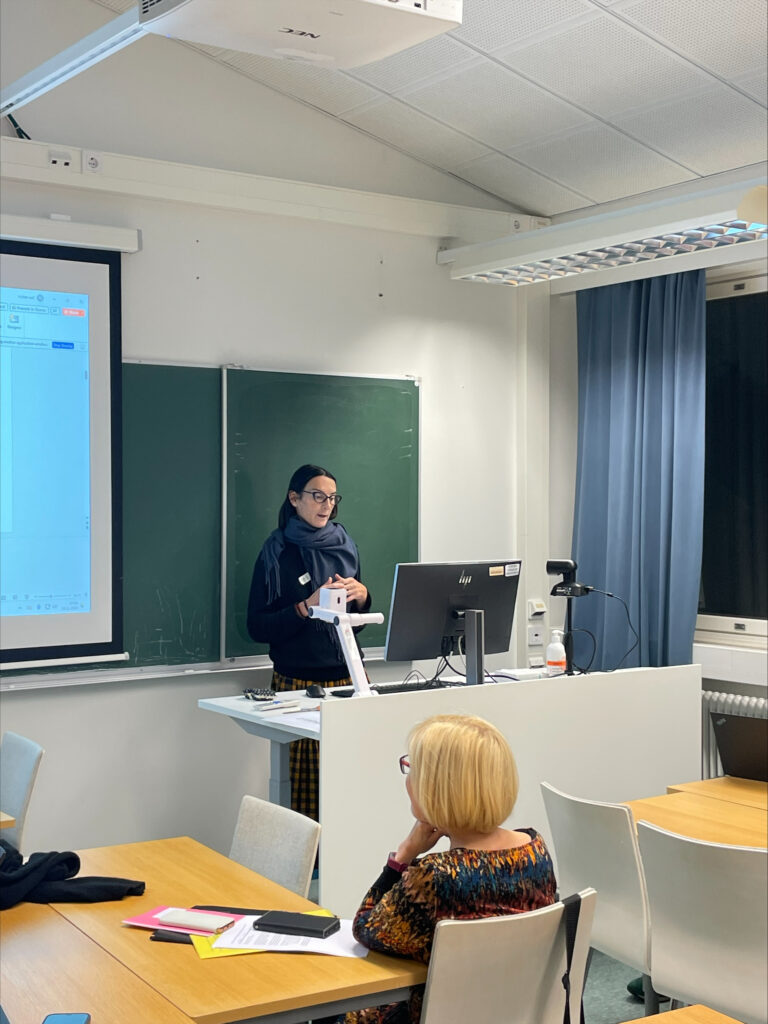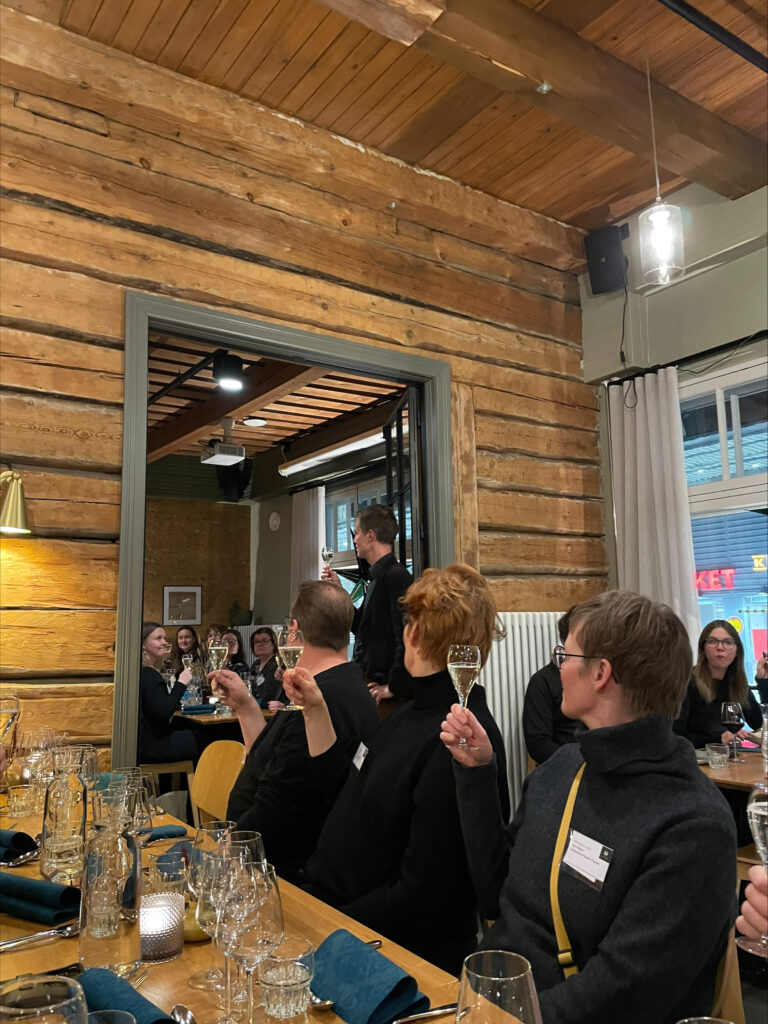Mari Niva, Iida Alasentie, Silvia Gaiani and Sami Koponen
In Finland, the most active forum for researchers focusing on environmental issues from a social science perspective is the Finnish Society for Environmental Social Science (YHYS). One of the yearly activities of the society is the YHYS Colloquium, an international scientific meeting bringing together practitioners and users of environmental social science in Finland and internationally. The Society’s 29th Colloquium in November 2023 was hosted by the University of Eastern Finland in Joensuu (https://sites.uef.fi/yhys2023/). The event gathered more than 100 participants from Finland and abroad.
The Finnish SmartDairy team was actively present in the Colloquium and arranged a session entitled ‘Maintaining and challenging the position of animal- and plant-based foods in food systems’. They heard most interesting presentations from both young and more senior researchers focusing on the position of animal and plant-based foods in food systems. The presentations in the session shared the starting point that food systems are critical in solving problems related to climate change, loss of biodiversity, and deterioration of ecosystems, and that a transition towards more plant-based diets is needed to reduce the harmful ecological effects of food systems. The presentations were divided into two broader themes: the first session took a system-level focus on sustainable and fair food systems and policies; and the second one looked at food practices, identities and discourses.

The system-level presentations included an analysis of a survey focusing on citizen acceptability and support for a fair meat price (presented by Marguerite Beattie, University of Helsinki), a literature review on decision support for sustainable dietary choices (Wanying Yan, University of Helsinki), an analysis of the potential of meat consumption corridors as a means to reduce meat consumption (Minna Kanerva, University of Bremen), and examining power relationships in the dairy system (Silvia Gaiani, University of Helsinki). The session on practices, identities and discourses presented an ethnographic study on living (with) animals and plants in subsistence farming and community-supported agriculture in Finland (Riikka Aro, University of Jyväskylä), a historical analysis of how nationalism and naturalness are used in Finnish milk promotion (Taija Kaarlenkaski, University of Eastern Finland), and a qualitative study on the practical, material and symbolic drivers of cheese consumption in Finland (Sami Koponen, University of Helsinki).
In terms of the SmartDairy project, the three presentations focusing on milk and dairy products were of particular interest. In her presentation Dr. Taija Kaarlenkaski asked what kinds of arguments and discourses have been used in milk promotion in the past decades. Through an analysis of promotional material by the Finnish milk promotion association Maito ja Terveys (‘Milk and Health’) that functioned from the late 1950s to 2020, Kaarlenkaski showed that the consumption of milk has been promoted by drawing on ideals of tradition, naturalness and purity, as well as on images of Finnish nature, fields and cows, and of vigorous and respectable-looking youth drinking milk. Both milk production in the Finnish climate conditions and milk drinking have been depicted as ‘natural’ and part of Finnish identity, thus strengthening the position of milk in Finnish food cultures.

Two presentations were based on work carried out in the Smart Dairy project. Dr. Silvia Gaiani presented a study conducted together with Iida Alasentie focusing on power imbalances in the Finnish dairy sector. Her presentation started by providing a framework on the current status of the global food systems consisting of different sub-systems (i.e. farming and waste management system) connected to other systems, such as energy and health systems. Gaiani noted that the parallel systems influence and establish the food system’s ability to promote food justice and sustainability transitions, but a just transition is not easy when some actors have relatively more control over key aspects of the food supply chain. As a case study, Gaiani presented the complexity of the dairy sector in Finland. She noted that Finland is dominated by mid-scale farms and that the majority of farmers are organized in cooperatives (the market share of which is as large as 97%). At the same time, the dairy industry is highly concentrated with a few milk processing companies and retail chains dominating the market. A workshop arranged by the SmartDairy project with dairy sector stakeholders concluded that strategic changes are required to promote more equal power relations across the supply chain.
Dr. Sami Koponen presented preliminary results from a study by himself, Taru Lindblom and Mari Niva based on 30 interviews with Finnish consumers representing various social backgrounds, ages, and diets. The presentation examined the stability of cheese consumption in Finland over recent decades. Koponen elaborated on practical, material, and symbolic drivers of cheese consumption. For instance, he portrayed the consumption of ‘fine’ cheeses as a practice that might assist young people in becoming ‘proper adults.’ He emphasized the routinised nature of (cheese) consumption and the influence exerted by the cheese industry, retailers, media and other stakeholders in upholding a cheese-rich food culture. The study suggests that Finnish food culture may become less ‘cheesy’ (and thus more climate-smart) in the future if the central role of these stakeholders in transitioning away from heavy cheese consumption is acknowledged.

Together the presentations in the session showed the many social scientific perspectives and analytical approaches to the study of how the position of animal- and plant-based foods is currently reproduced and challenged by public policies, media, marketing, and various food-related practices. By so doing, they made evident how the tensions between producing and consuming animal-based and alternative products are both strengthened and resolved in various discourses and practices as well as by different actors in the food system.
Leave a Reply